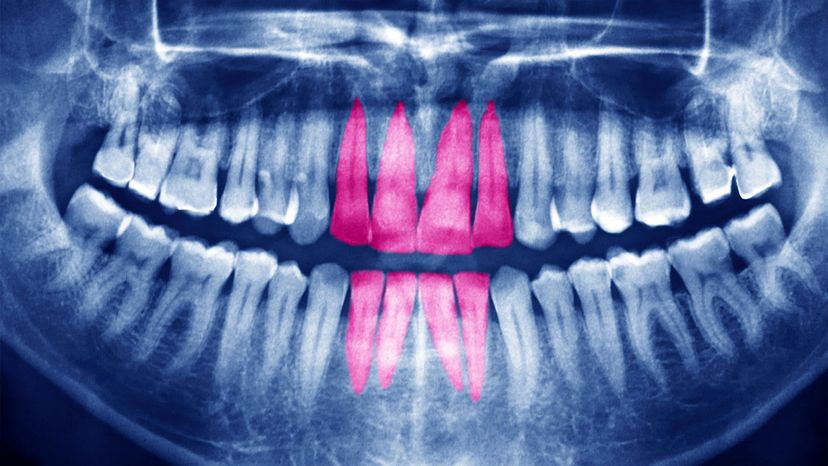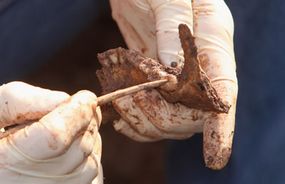Tooth Identification

Tooth enamel (the outer layer of teeth) is harder than any other substance in the human body, which is why teeth remain long after all other body parts have decayed. In addition, teeth can withstand temperatures of more than 2,000 degrees Fahrenheit (1,093 degrees Celsius). And even though teeth that have been through especially intense heat are very fragile and may shrink, they can be preserved with lacquer and used for identification as long as they are handled very carefully.
Because teeth are so tough, and because there is no database of teeth similar to those for fingerprints and DNA, forensic dentists are often employed to identify the dead, especially fire victims. If a corpse is intact, the dentist will likely work in a morgue and expose the jaws surgically for examination. Even if only a few teeth are available, a forensic dentist can still make a positive identification using dental records. While the best comparisons come from X-rays, notations on someone's tooth chart can tell the dentist if the teeth are the same when X-rays aren't available.
Advertisement

When there is an incident involving multiple deaths, forensic dentists receive a list of possible victims and compare available dental records with the teeth to find a match.
Identifying an individual by their teeth without dental records is much more difficult. However, it's possible to glean some information without them. Since teeth grow an average of 4 micrometers per day, for example, a forensic dentist can estimate someone's age based on the length of their teeth. It's also possible to distinguish ethnicity from the teeth. To wit: Some Asians and Native Americans have incisors with scooped-out backs.
In addition, things like broken teeth, missing teeth and gold crowns might be recognized by the deceased's friends and family members. And teeth can indicate things about the person's lifestyle. The teeth of pipe-smokers and bagpipe players have a distinctive wear pattern. Dressmakers and tailors, who often put pins and needles in their mouths, may have chipped teeth.
Sometimes, forensic dentists can retrieve DNA samples from a victim's teeth by extracting the pulp from the center of the tooth. Unlike the enamel, pulp can be damaged by fire and other conditions, but it can also last for hundreds of years.
Dental identification is often the last resort when trying to identify a deceased person, and it isn't always possible — some people simply can't be identified.
Now we'll look at the other main aspect of forensic dentistry previously mentioned — bite-mark analysis.